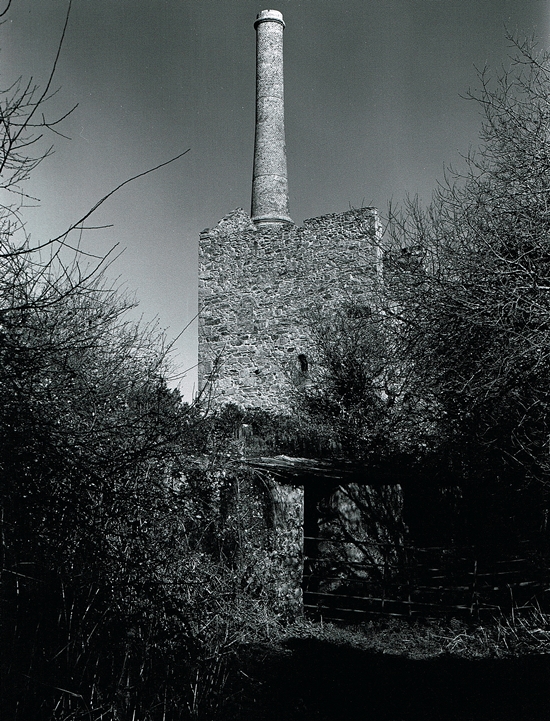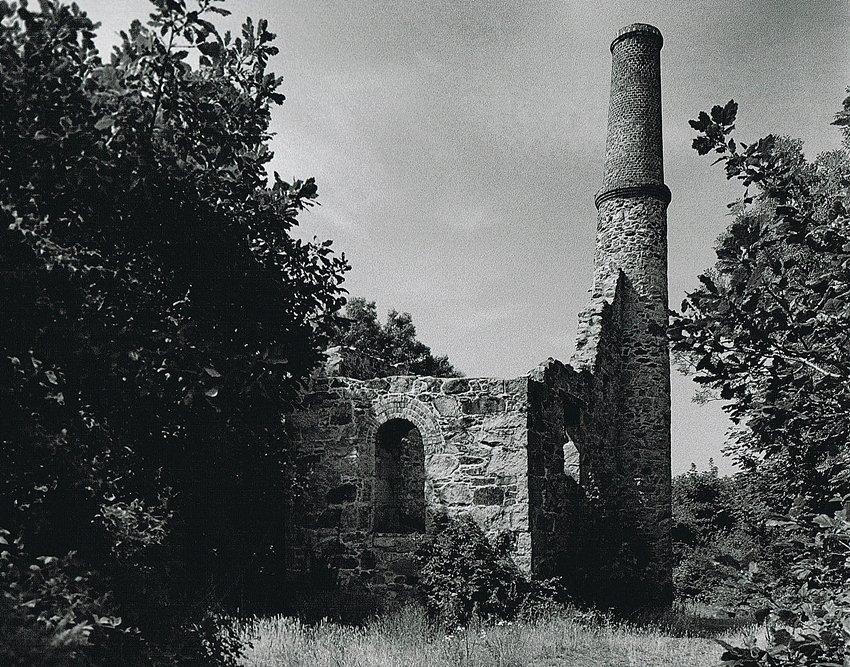Killifreth Mine: This site is best known for the tallest remaining stack in Cornwall at Hawke’s (or Richard’s Shaft) Pumping Engine House. This building was erected during 1891 for an 80” engine. In 1897 there was an accident when the engine beam (bob) broke and the engine was subsequently scrapped.
All the images on this page were taken during the mid 1990’s.

In a later reworking in 1913 a second hand 85” engine was installed in the house and the height of the stack was increased, This provided sufficient draught for the four boilers which powered it along with an air compressor also a horizontal steam whim.

At the rear of the house the shaft is capped with a well preserved balance box pit. Finally the shaft reached a final depth of 125 fathoms. The engine was scrapped during 1944 soon after the troops who were billeted in the area left for D-Day.

Mining here was recorded as early as the 16th century, the mine operated from 1859-1924, starting first as a Copper producer then progressing onto Tin (1864). The final re-working was with Wheal Busy from 1923-1924.
The recorded total output of the mine was: 4,060 tons Tin, 681 tons Copper and 360 Tons of Arsenic.










